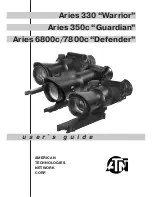
8
WHAT TO EXPECT:
Depending upon what is in the sky; Planets will look small, but you might be able
to see cloud bands on Jupiter or the rings of Saturn. Craters on the Moon will be
clear and numerous, the waxing and waning of Venus should be visible, and many
bright deep-sky objects will fill the eyepiece. Don’t expect to see
color as you do in NASA photos as our eyes are not sensitive enough to see color in
deep-sky objects, except in a few of the brightest ones. Remember that you are
seeing these objects using your own eyes! Each session with the telescope will be a
learning experience.
OBJECTS TO OBSERVE:
The Moon:
Is one of the easiest and most interesting targets to view. Lunar craters,
“seas”, and even mountain ranges can all be clearly seen from an
average distance of 238,000 miles away! With its ever-changing phases, you’ll get a
new view of the Moon every night it’s up. Make sure to observe the Moon when it
is well above the horizon to get the sharpest images. The best time to observe is
during a partial phase, that is, when the Moon is not full. During partial phases,
shadows are cast on the surface which reveal more detail, especially right along the
border between the dark and light positions of the disk (called the “terminator”). If
the Moon is too bright, or you want a bit more contrast, remove the small plug from
the dust cover and put the cover back on the telescope. This is called “steeping
down” and reduces the light hitting your eye.
The Planets
do not stay at “fixed” locations like the stars do. To find them you
should refer to the Sky Calendar (telescope.com) or to charts published
monthly in
Astronomy, Sky and Telescope,
or other astronomy magazines and
websites.
(Please see pg. 12)
Venus, Jupiter, and Saturn are the brightest objects in
the sky after the Sun and the Moon.
Summary of Contents for STARBLAST
Page 10: ...10...





























